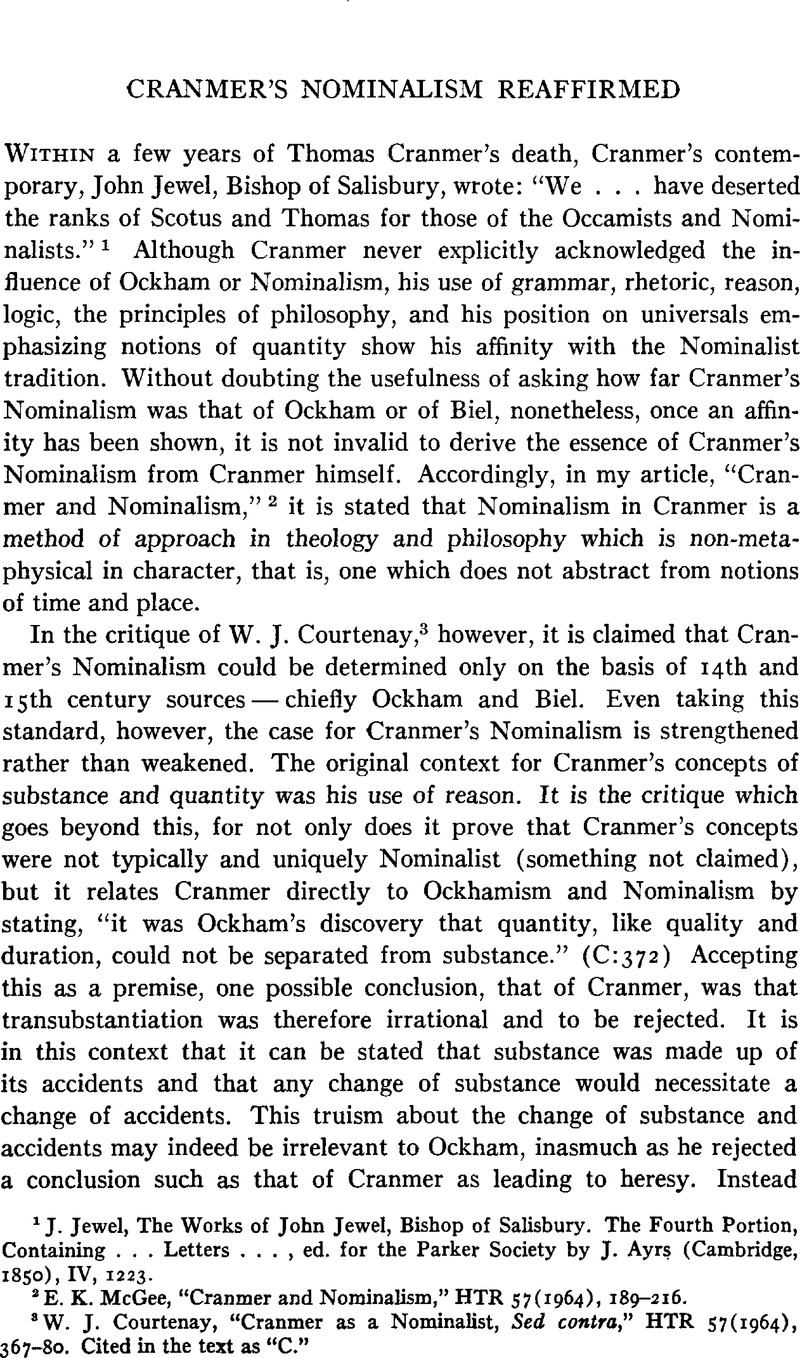No CrossRef data available.
Article contents
Cranmer's Nominalism Reaffirmed
Published online by Cambridge University Press: 10 June 2011
Abstract

- Type
- Notes and Observations
- Information
- Copyright
- Copyright © President and Fellows of Harvard College 1966
References
1 J. Jewel, The Works of John Jewel, Bishop of Salisbury. The Fourth Portion, Containing … Letters …, ed. for the Parker Society by J. Ayrs (Cambridge, 1850), IV, 1223.
2 McGee, E. K., “Cranmer and Nominalism,” HTR 57(1964), 189–216CrossRefGoogle Scholar.
3 Courtenay, W. J., “Cranmer as a Nominalist, Sed contra,” HTR 57(1964), 367–80CrossRefGoogle Scholar. Cited in the text as “C.”
4 F. C. Copleston, A History of Philosophy, II: Mediaeval Philosophy, Augustine to Scotus (Westminster, Md., 1950), 485.
5 E. K. Rand, Founders of the Middle Ages (1st ed., 1928; Cambridge, Mass., 1929), 9f. “… the effort to get back to the primitive core … is something like peeling an onion. You begin to remove the accretions, you peel and peel, till nothing is left — nothing but the knife, the own peculiar knife of the peeler. But an onion was there at first.”
6 It may be noted in passing that P. Boehner, “Ockham's Political Ideas,” Collected Articles on Ockham, ed. by E. M. Buytaert (St. Bonaventure, N.Y., 1958), 445f., allows that there may be an inner connection between Ockham's philosophical and theological systems, and makes objection to only one such interpretation. Also, D. Trapp, “Augustinian Theology of the 14th Century, Notes on Editions, Marginalia, Opinions and Book-Lore,” Augustiniana 6(1956), i4?f., while stating that the logico-critical method arose from theological controversy, goes on to add that as a result geometry became an ideal for theology, and that a new mathematical consciousness became all-pervading.
7 H. A. Oberman, The Harvest of Medieval Theology, Gabriel Biel and Late Medieval Nominalism (Cambridge, Mass., 1963), 57f.
8 Oberman, ibid., 99.
9 Oberman, ibid., 353f.
10 Luther, M., “Two Kinds of Righteousness, 1519,” Luther's Works, Vol. 31Google Scholar: Career of the Reformer: I, ed. by H. J. Lehmann and H. J. Grimm, and trans, by L. J. Satre (Philadelphia, 1957), p. 300.




